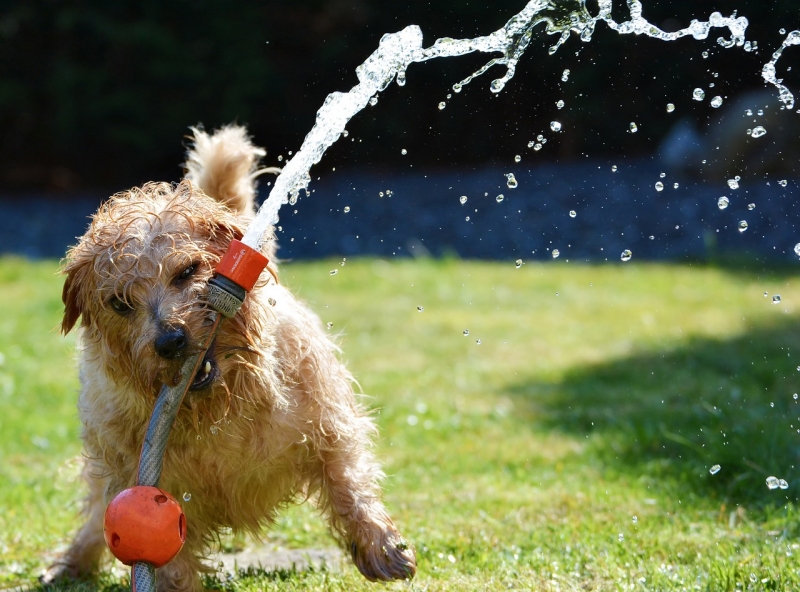Keeping your Dog Cool this Summer
19th January 2017
We all love summer, especially taking the dog out for a walk or run at the local park. But just as you need protection from the sun and heat, so does your dog.
It’s important to know the limits of what your dog can handle and be able to recognise early signs of heat stroke. Heat related illnesses can be prevented if you take the right precautions.
What Causes Heat Stroke
Unlike humans who sweat, dogs eliminate their body heat by panting, and when panting isn’t enough their temperature rises. When they are in a hot environment, such as in direct sun or left inside a closed car, they can develop hyperthermia easily and quickly.
An elevated body temperature causes them to release substances that cause inflammation. Hyperthermia occurs when a dog’s body temperature goes above normal range (which varies by breed), so above 39°C is considered abnormal.
How to Recognise Heat Stroke
Heat stroke is a non-fever form of hyperthermia that occurs with excessive exposure to heat.
Signs of overheating include:
- Excessive panting
- Noisy breathing
- Rapid heart rate
- Bright red gums, tongue or eyes
- High body temperature
- Muscle tremors
- Disorientation
- Wobbly movement
- Sluggishness
Signs of extreme heat stroke include vomiting, seizures and collapse.
In a 43°C environment heat stroke leads to weakness, lethargy and can cause failure of vital organs and sometimes death.
How to Treat Heat Stroke
Should you witness any of the above symptoms and believe the dog may be suffering from heat stroke, immediately remove the dog from the source of heat.
Wet the dog under a cool shower or hose, or even use a spray bottle. Cover with wet towels and give them as much cool water as they want until veterinary care is obtained.
Do not submerge an overheated dog in ice or ice-cold water. This can cause blood vessels to constrict and actually slow the cooling process.
Is Your Dog At Risk
Dogs particularly at risk are the very young (up to 6 months) and the very old (large dogs 7+ years, small dogs 14+ years), dogs with a coat of thick hair or overweight, ill, on medication or those with poor circulation. Dogs who have a history of heat-related disease are also a high risk.
How To Prevent Heat Stroke
- Provide shelter from the sun with a shaded area outdoors.
- Never leave your dog in the car, even under a shaded area.
- Keep your dog well hydrated by ensuring free access to fresh, clean water.
- Try to exercise your dog in the morning or early evening, avoiding peak-sun hours.
- Take precautions when at the beach (provide shade, avoid over-exertion and don’t let him/her sit directly on the sand).
If you see someone else’s or your own dog showing signs of overheating take immediate action and then call us for further advice.

